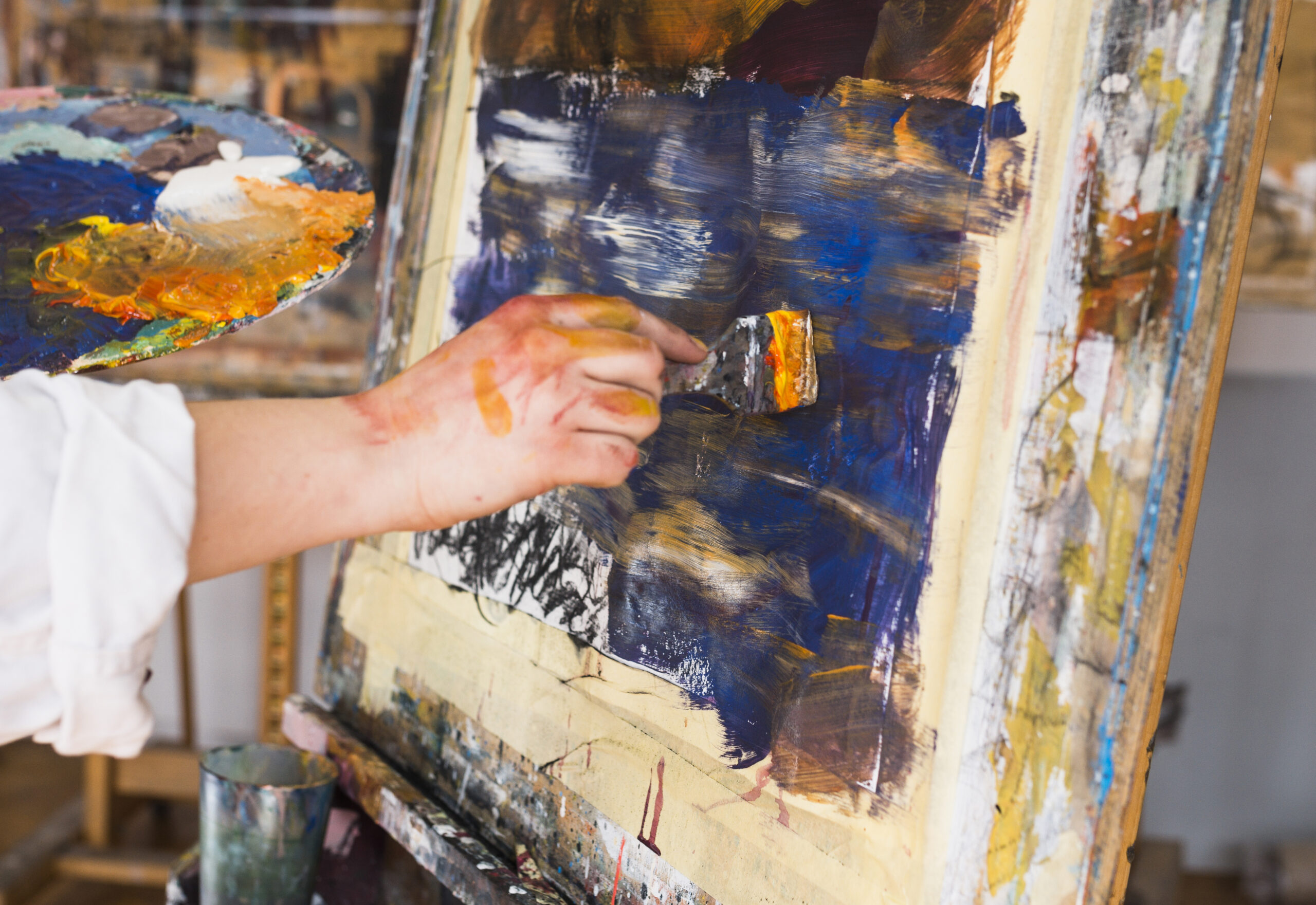The Dutch Golden Age, spanning the 17th century, was a period of remarkable artistic innovation and flourishing. painters from this era transformed the art world with their groundbreaking techniques and fresh approaches. This article delves into ten pivotal art movements and styles championed by Dutch painters that not only shaped their own era but also left an indelible mark on the art world.
Dutch Painters’ Revolution: The Rise of Realism
Dutch painters were instrumental in the rise of realism during the 17th century. This movement focused on depicting subjects with a high degree of accuracy and detail, reflecting the everyday life of the middle class. Artists like Rembrandt van Rijn and Johannes Vermeer embraced this approach, presenting scenes with lifelike precision and emotional depth. Realism allowed for a more honest representation of contemporary life, shifting away from idealized or allegorical subjects to focus on the beauty and complexity of ordinary experiences.
The Impact of Chiaroscuro in Dutch Painters’ Art
Chiaroscuro, the technique of using strong contrasts between light and dark, was a hallmark of Dutch painters’ work. This method, perfected by artists like Rembrandt, created dramatic effects and enhanced the three-dimensionality of subjects. By manipulating light and shadow, painters could draw attention to specific elements, evoke mood, and highlight textures. The mastery of chiaroscuro became a defining feature of their paintings, contributing to the emotional intensity and realism of their work.
Dutch Painters and the Golden Age of Still Life
The still life genre reached new heights during the Dutch Golden Age, thanks to the innovative approaches of painters. Artists such as Pieter Claesz and Willem Kalf explored this genre with meticulous detail and compositional prowess. Their still life paintings featured everyday objects—often including symbols of wealth and mortality—arranged in carefully constructed compositions. This movement highlighted the artists’ technical skills and allowed for a rich exploration of light, texture, and symbolism.
The Influence of Genre Painting by Dutch Painters
Genre painting, which focuses on scenes of everyday life, was significantly popularized by painters. Artists like Jan Steen and Pieter de Hooch excelled in depicting domestic and social scenes with vibrant detail and humor. These paintings often captured moments of domestic life, leisure, and social interaction, reflecting the diverse activities and behaviors of the time. Genre painting provided a window into the everyday lives of 17th-century Dutch society, emphasizing realism and narrative.
The Evolution of Portraiture in Dutch Painters’ Work
Portraiture underwent a significant evolution during the Dutch Golden Age, thanks to the contributions of painters. Rembrandt van Rijn and Frans Hals are particularly renowned for their portraits, which moved beyond traditional, static representations to capture the personality and dynamism of their subjects. The focus shifted towards naturalism and psychological depth, with an emphasis on capturing the sitter’s individuality and emotional expression.
Landscape Innovations byPainters
Dutch painters were also pioneers in landscape painting, a genre that gained immense popularity during the Golden Age. Artists like Jacob van Ruisdael and Meindert Hobbema explored the Dutch countryside with remarkable precision and atmospheric effects. Their landscapes often featured expansive skies, intricate details, and a sense of grandeur that conveyed the beauty and variety of the natural environment. This movement marked a shift towards capturing the essence of the landscape as a subject worthy of artistic exploration.
The Role of Symbolism in Dutch Painters’ Still Life
Symbolism played a crucial role in Dutch still life paintings, adding layers of meaning to the artworks. painters often incorporated objects with symbolic significance, such as skulls, watches, and fruit, to convey themes of mortality, time, and transience. This use of symbolism not only showcased the artists’ technical skills but also invited viewers to contemplate deeper philosophical and moral messages embedded in the compositions.
The Development of Group Portraiture in Dutch Painters’ Art
Group portraiture became a prominent genre during the Dutch Golden Age, with painters leading the way in its development. Artists like Rembrandt and Frans Hals created large-scale group portraits of civic guards, guild members, and other collectives. These portraits were notable for their dynamic compositions and the ability to capture the individuality of each member within a cohesive group setting. This genre reflected the importance of collective identity and social status in 17th-century Dutch society.
The Emergence of Historical Painting by Dutch Painters
While historical painting was not as dominant in Dutch art as in other European countries, painters still made significant contributions to the genre. Artists like Ferdinand Bol and Govert Flinck explored historical and mythological themes, bringing a unique Dutch perspective to these subjects. Their historical paintings often incorporated elements of realism and contemporary detail, bridging the gap between historical narrative and modern observation.
The Legacy of Baroque Influence in Painters’ Art
The Baroque period had a profound influence on painters, shaping their approach to drama and emotional expression. While Dutch artists adapted Baroque techniques to their own styles, they maintained a focus on realism and everyday subjects. The influence of Baroque art is evident in the dramatic compositions, dynamic use of light, and emotional depth found in works by painters like Rembrandt and Vermeer. This legacy continues to resonate in the art world, reflecting the enduring impact of the Baroque movement.
Conclusion
Dutch painters from the 17th century made extraordinary contributions to various art movements, each of which had a lasting impact on the art world. From the rise of realism and chiaroscuro to the innovations in still life, genre painting, and landscape art, their work transformed artistic practice and left an enduring legacy. Exploring these ten game-changing art movements offers a deeper appreciation of the creativity and skill of painters and their significant role in the evolution of art history.
FAQs
Q1. What were the main characteristics of 17th-century realism in art?
17th-century realism in art was characterized by a focus on accurately depicting everyday life, detailed attention to naturalistic elements, and a commitment to portraying subjects with emotional depth and authenticity.
Q2. How did chiaroscuro contribute to the drama in paintings?
Chiaroscuro, the technique of using strong contrasts between light and dark, contributed to the drama in paintings by enhancing the three-dimensionality of subjects, creating a sense of depth, and highlighting key elements to evoke emotional responses.
Q3. What elements define a traditional still life painting?
Traditional still life paintings are defined by their depiction of inanimate objects arranged in a detailed and often symbolic composition. Common elements include careful attention to textures, lighting, and the inclusion of objects that may carry deeper meanings or themes.
Q4. How did genre painting reflect daily life in the 17th century?
Genre painting reflected daily life by capturing scenes of ordinary activities, domestic settings, and social interactions with vivid detail and often a touch of humor or commentary, providing a snapshot of contemporary life and societal norms.
Q5. What were some of the techniques used in Baroque art to create a sense of movement and emotion?
Baroque art techniques used to create a sense of movement and emotion include dynamic compositions, dramatic use of light and shadow (chiaroscuro), intense color contrasts, and the depiction of expressive gestures and facial expressions.
Also read: Gourmetten Magic: 10 Unforgettable Dishes You Need to Try Tonight





